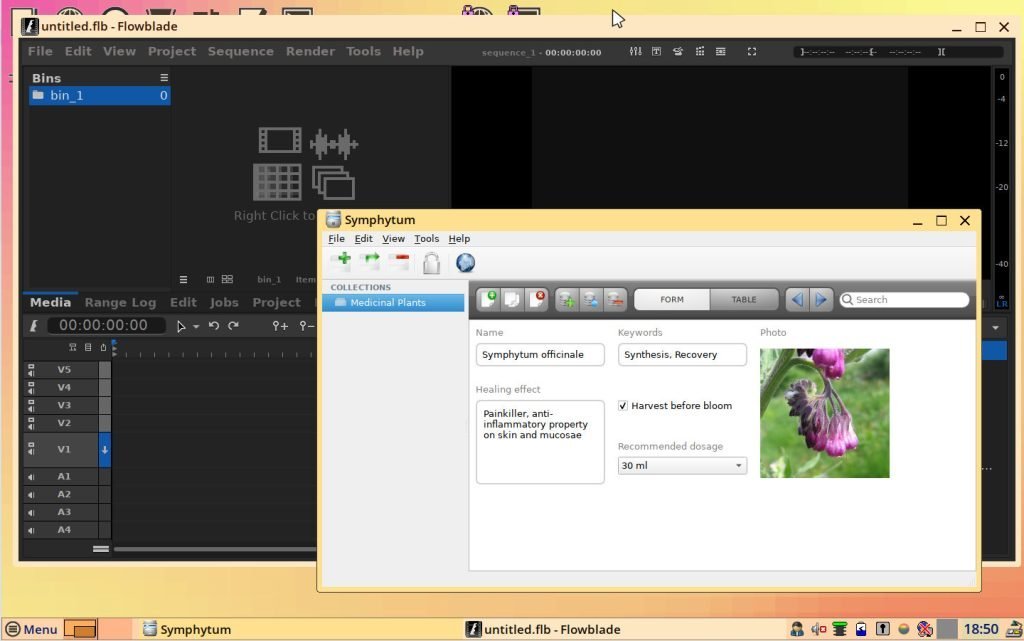A new release of EasyOS 5.7 is now available, I did a quick review of this version.
EasyOS is an experimental and standalone distribution, pushing the boundaries with its unique concepts and features. The recently released EasyOS 5.7 builds upon its innovative foundation, introducing several new features and improvements for those who want a container-based Linux for their older hardware.
I did a test drive of EasyOS 5.7 in VirtualBox, and here’s what I found.
EasyOS 5.7: Key highlights
This release arrives after 7 months since EasyOS 5.4. EasyOS 5.7 brings a handful of new applications, including KeePassXC, Symphytum, Flowblade, and p7zip. These additions enrich the already existing application base.
- KeePassXC: Password manager
- Flowblade: Video editor
- p7zip: Advanced zip utility
- Symphytum: Personal database software
The addition of these tools enhances the user experience, providing more options for productivity, security, and multimedia tasks.
A key improvement in this release lies in the improved support for Virtual Machines (VMs). The inclusion of AQEMU and QtEmu enhances the virtualization experience, allowing users to run applications or even an entire desktop environment within a container.
The adoption of PKGget support enables users to install packages (.xbps packages) from Void Linux’s repositories, providing access to a wider range of software options. This gives users the option to install the tools they need without unnecessary constraints using Void package manager.
Moreover, EasyOS 5.7 replaces the traditional sudo command with “sudo-sh”. This enables a secure and robust Linux experience for its users. The Login and Security Manager has undergone a comprehensive overhaul in EasyOS 5.7, enhancing the overall system’s security and user management.
Furthermore, the distribution has expanded its language support, with particular attention given to Turkish and Russian translations. This inclusivity ensures a broader user base, making EasyOS accessible to a global audience.
Numerous system-level fixes, including enhancements to network and Samba functionality, contribute to a more stable and reliable operating environment. EasyOS 5.7 users can expect a smoother overall experience with these refinements.
This version uses 300 MB of RAM in a virtual machine environment. If you run it via USB or on a physical disk, the performance should be similar. It is extremely lightweight and perfect for aging hardware.
Future Prospects: “easyVoid” and the “Scarthgap-series”
Looking ahead, the EasyOS development team is workign on the “easyVoid” and the “Scarthgap-series”. The former, dubbed a “next generation” EasyOS, will feature a new build system named “woofV,” promising an “experimental on steroids” experience. Although no release date is confirmed, the experimental nature of EasyOS suggests many exciting things in the pipeline.
Additionally, the “Scarthgap-series” is anticipated to be released this year, possibly superseding the existing Kirkstone-series.
Closing notes
Just so you know, EasyOS is different from your traditional distribution. It comes with an image file (.img) instead of an ISO. The IMG file is the whole operating system. All you need to do is mount it on a USB stick, and you are good to go. During installation, it will create a file system on your USB and stays there.\
Alternatively, you can install it on your physical SSD or HD as well.
That said, EasyOS is not a fork of Puppy Linux. It’s unique in nature. With its Unix philosophy, layered file system, PET packages, JWM-ROX desktop – it can easily replace your daily drive OS. For, surely, it would run superfast in your older hardware.
EasyOS 5.7 can be downloaded from the official website.
If you are running EasyOS 5.4, you can simply run the update program from the menu/desktop.
Via release notes




